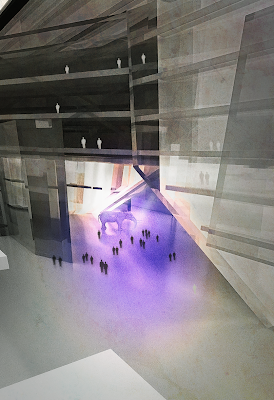‘High walls, no light, segregated from the society, prisons have for a long time a place of confinement and punishment. No walls, ample light, placed in the heart of Melbourne’s CBD is the prison we propose as a place of rehabilitation and reintegration with the society.’
Despite prison population and recidivism significantly increasing over the last decade, the incarceration structure in Australia has failed to see advancements throughout the past century and desperately requires innovation and re-imagination. This debate creates an opportunity to rethink the future of prisons design. This is evidently shown through the locations of prisons at the edges away from the city, framing the negative perception that prisoners are transported away akin to garbage.
The thesis attempts to challenge negative preconceived notions of “PRISONS” to re-instil an urban penitentiary type into the city fabric that is desirable, focusing on the prison ‘wall’ and what it means to be in the city?
The idea of a prison in the city isn’t foreign or new;
But by putting the new type back into the city, will the architecture play the dominant role it once did historically?
How would this proposal for a new prison type change negative perceptions of the prison on a multitude of many levels?
This occurs primarily with the prison wall.
A ‘Wall’ is defined as ‘a continuous structure that encloses or divides an area of land’. The wall defines the ‘social physic that two bodies cannot share the same place at the same time’. This forces people to remain on their side, primarily for their well-being, which results in the main scenario of having a prison wall.
At present, the “prison walls” are located in the outskirts of civilization consists of either a barren tall concrete wall or even just a tall fence as there is very little impact on the surrounding context and people to take into consideration.
The new prison wall needs to allow a level of permeability and acceptance to happen between the city and the prison, and can only do so only via a state of trust between the law and inhabitants of the prison and the urban dwellers. Only then, can the intervention start to be-apart of the city morphology, the hidden gem that increases the value of its surrounding properties.
 Program Allocation Conception: Transparency
Program Allocation Conception: Transparency
 Programmatic Map: Spatial Exploration
Programmatic Map: Spatial Exploration
 Design Process
Design Process
 Context Render
Context Render
 Materiality Exploration
Materiality Exploration

Graffiti Laneway




No comments:
Post a Comment